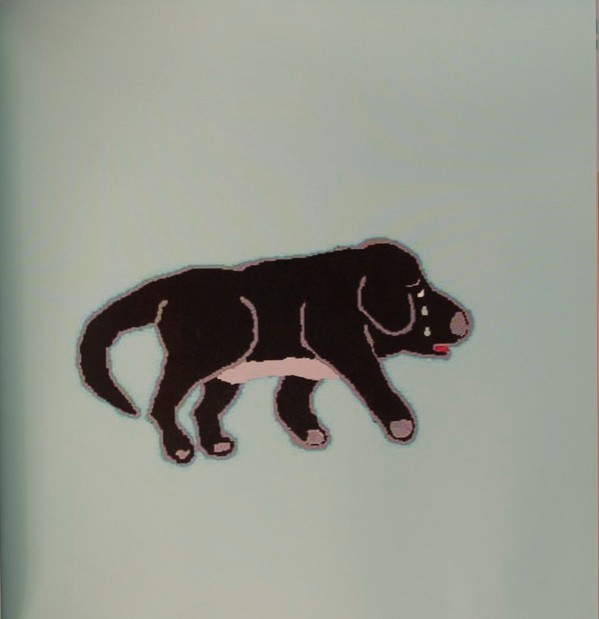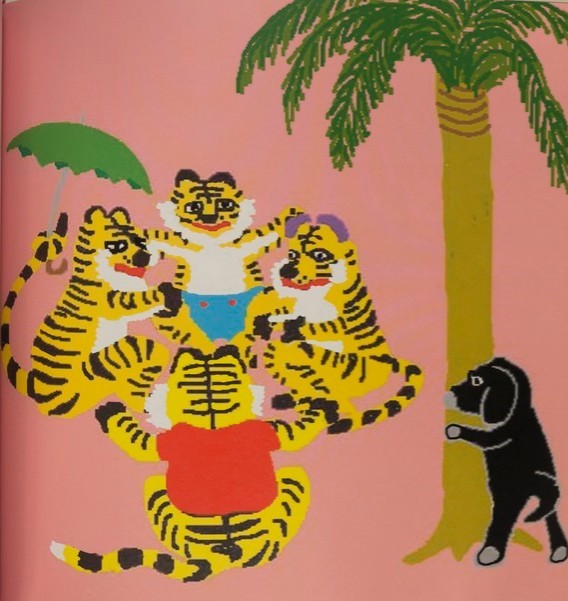Little Black Sambo transcends cultures and time periods, yet the racial connotations, often negative, persist through various editions and languages. One version of Little Black Sambo, printed in 1997 in Japan, continues the racial “othering” of black people. In “Race and Reflexivity: The Black Other in Contemporary Japanese Mass Culture,” John Russel analyzes the cultural “othering” of black people, which emerged in many Western cultures and then traveled to Japan. A reading of this version of Little Black Sambo illustrates Japanese discrimination against black people: the book portrays the main character, Sambo, as a black dog, yet the illustrations are computer generated, a quality that suggests the recent printing of the book. Thus, taken together, these images demonstrate that Japanese culture continues to see black people as other, degraded to a dehumanized position.
Russell asserts the history of racial views in Japan: “Metaphors equating blacks with animals and subhumans can be traced to the 16th and 17th centuries,” which acknowledges a connection between black people and animals (5). This dehumanizing view provides a context of rooted discrimination in Japanese culture that likely manifested through several cultural media, including children’s literature. Little Black Sambo was originally published in London, England, and traveled to various cultures. These images provide a view from a Japanese version in which the little black boy, Sambo, is no longer a boy, but a black dog. Russell asserts that the view of blacks in Japan adheres to negative characteristics of “primitivism” and “bestiality,” making it viable to portray a little black boy as a dog.
The image of the tigers sitting in a circle beside a tree, each with a piece of Sambo’s clothing, represents many of the cultural representations of black people. Though the dehumanization of the black “other” began centuries ago, Japanese culture continues to assert discriminatory views into the modern era. The racialized versions of Little Black Sambo achieved high popularity in the mid 20th century and it continues to be popular today: “Although published well after the convention of representing blacks in the Western stereotypical mode had taken root, its popularity […] and influence in shaping the Japanese image of the black Other should not be underestimated” (13). This image of the tigers gathered with the clothes is highly pixelated. The obvious computer generated images that appear throughout the book force the reader to acknowledge the how recently the book was printed.
Russell, John. "Race and Reflexivity: The Black Other in Contemporary Japanese Mass Culture." Cultural Anthropology 6.1 (1991): 3-25.

